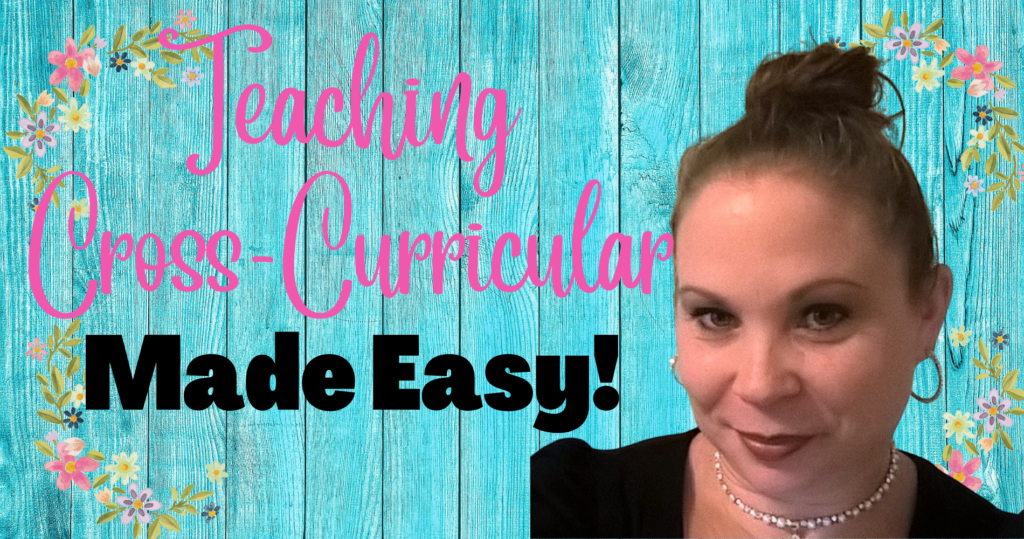
If you’ve never taught with Project-Based learning before, and have always wondered what it could be and how to teach it… then you’re in for a treat! I’m going to walk you through the steps and show you a Recycling PBL that I did with my first graders in April for Earth Day! I did this PBL during my science block in the afternoon for about 2 weeks.
What is Project-Based Learning?
Project-based learning (PBL) is a teaching methodology that revolves around students completing projects to learn content and skills. In PBL, students investigate and respond to an engaging question, challenge, or problem. They work over an extended period of time to research, design, plan, and execute their projects. PBL emphasizes active learning, collaboration, critical thinking, and real-world problem-solving skills.
What Are the Key Components?
- Engaging Question or Problem: Projects begin with a driving question or problem that captures students’ interest and curiosity. This question or problem should be open-ended, challenging, and relevant to real-world issues.
- Inquiry and Investigation: Students conduct research and gather information to understand the topic or problem they are exploring. This often involves a combination of independent inquiry, group discussions, and consultation with experts.
- Authentic Tasks and Activities: Projects involve authentic tasks and activities that simulate real-world challenges. This could include designing solutions, creating products, conducting experiments, or developing presentations.
- Collaboration: PBL emphasizes collaboration among students. They often work in teams to brainstorm ideas, divide tasks, and solve problems collectively. Collaboration fosters communication skills, teamwork, and the ability to work effectively with others.
- Critical Thinking and Problem-Solving: Throughout the project, students engage in critical thinking and problem-solving. They analyze information, evaluate options, make decisions, and revise their approach as needed. PBL encourages students to think creatively and innovatively to address complex problems.
- Reflection and Revision: Students reflect on their learning experiences and the process of completing the project. They consider what they have learned, what challenges they encountered, and how they can improve in the future. Reflection promotes metacognition and helps students develop a deeper understanding of the content and skills.
- Public Presentation or Exhibition: Projects often culminate in a public presentation or exhibition where students showcase their work to an authentic audience. This could include classmates, teachers, parents, or members of the community. Presenting their work publicly builds confidence, communication skills, and a sense of accomplishment.
Overall, project-based learning offers a dynamic and engaging approach to education that promotes deeper learning, critical thinking, collaboration, and real-world application of knowledge and skills.
1.) Engaging Question:

For my PBL essential question, I decided to ask my students: What if Everyone Did That? And I put three pictures on my pocket chart that said: Reduce, Reuse, and Recycle. I just left it at that and let the students turn and tell each other what they think this means. This question could go either way: What if everyone recycled? Or, what if everyone didn’t recycle? Having those three pictures up on the chart helped spark some great conversations with my students. I love having them turn and tell each other what they already know to activate their schema. This step took us one day.
2.) Inquiry and Investigation:
I started by reading some great mentor texts to spark engagement. One book I love is Gail Gibbons’ book: Recycle. This book helps the students understand what recycling means and how we are a huge part of it for the Earth. I made vocabulary cards to put on my pocket chart such as: Compost, Aluminum, Recycling, Trash Can, Trees, Earth Day, Plastic, and Pollution. As we read the book, I would stop and ask my students what each word meant from the story. It’s important that they learn new academic vocabulary to be able to write their investigation. This step took us about 2 days to read the book and discuss the new vocabulary.


3.) Authentic Tasks and Activities:
I urged my students to bring in recycled materials such as aluminum cans, gallon jugs, egg cartons, tissue boxes, pipe cleaners, cotton balls, and toilet paper rolls to help us sort the products into three categories: Paper, Plastic, or Metal. We drew pictures of each of the three products inside a T-Chart to understand what they are made of and that they can be recycled.
The students then decided which products they wanted to use to make a new product. They could make anything they wanted out of the recycled products. They drew pictures of 4 materials that they were planning to use. This step took us about 2 days to sort the materials and draw them.
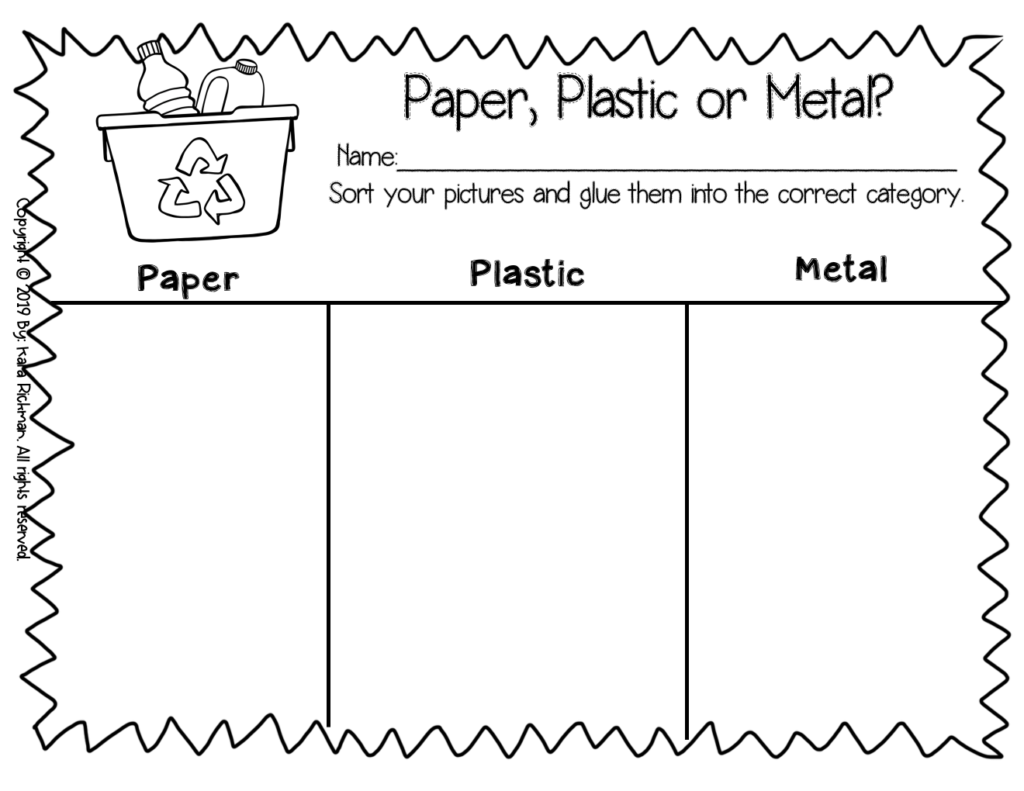
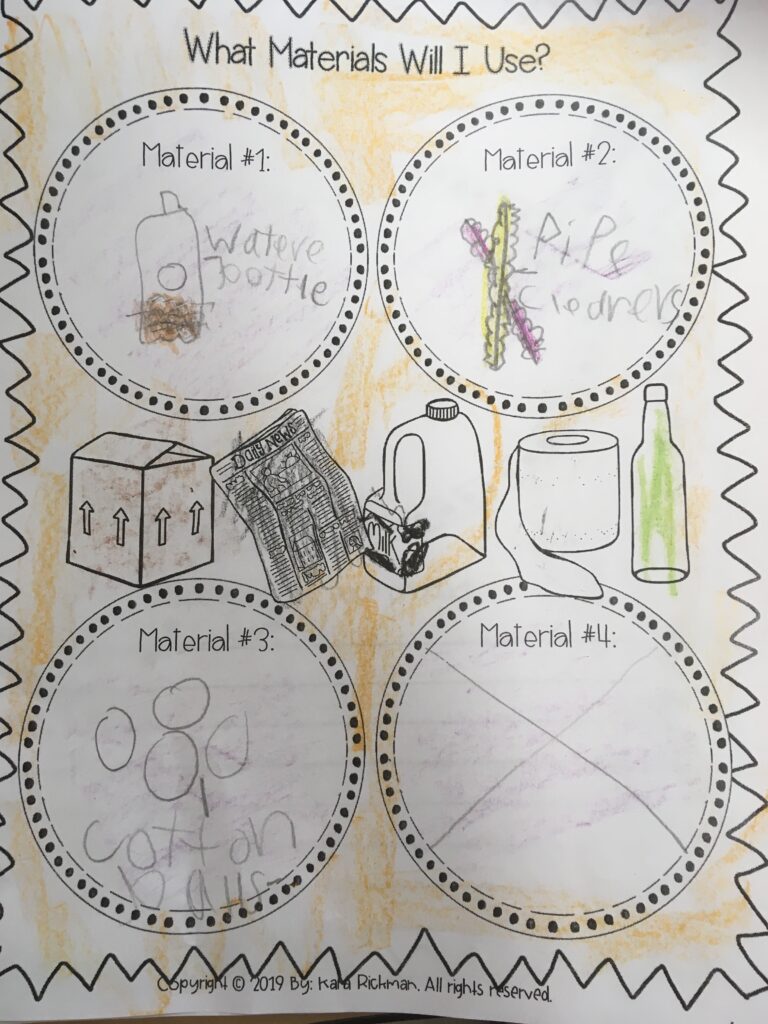
4.) Collaboration:
This is probably the most important step of getting to discuss what materials they would use to put together a new product and why. Some decided to make a birdhouse, bird feeder, binoculars, or bird bath. They wanted to make something to give back to nature. I put them into groups of 4 to plan and discuss what they were going to make and how they were going to make it. This step took us about 3-4 days so they had enough time to plan and build the product.

5.) Critical Thinking/Problem Solving:
This step is the hardest one- because if something doesn’t work, then it’s time for plan B or C. The students have to agree on what they are using and building, and they all have to work together. It’s not fair to make one person do all the work. I urged them to take turns drawing, building, and planning so it was fair. Many times the materials they would use wouldn’t hold or would fall apart, so they had to use another product. It took some time, but eventually, they built an end product to show. This step took about 2-3 days.
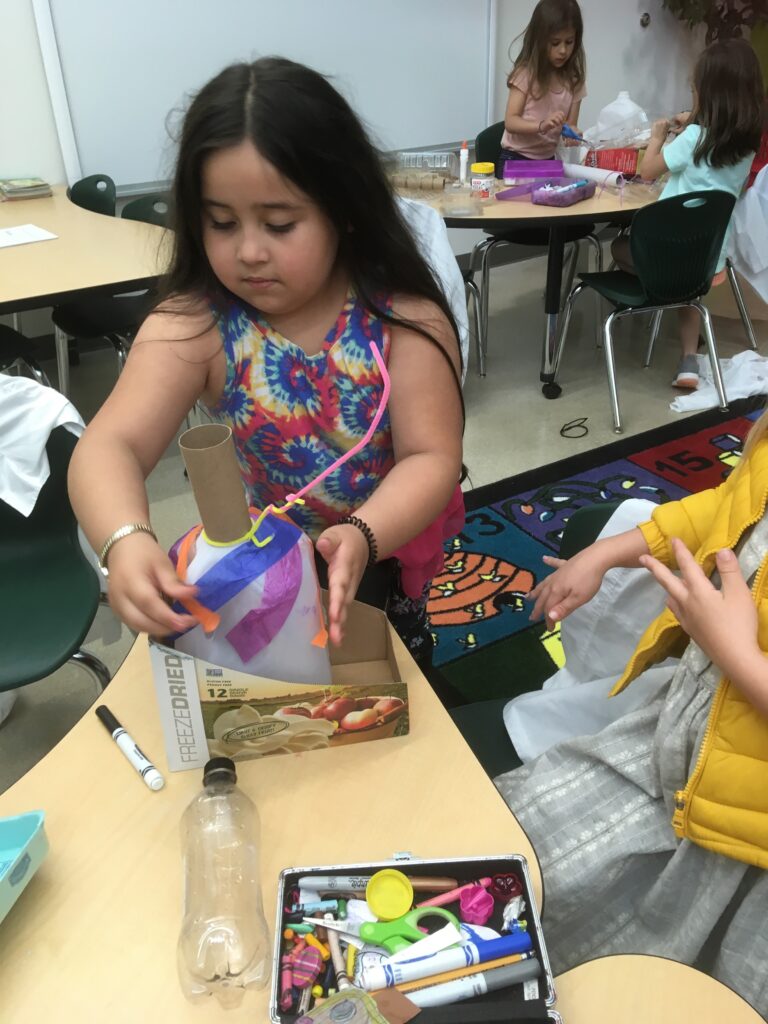
6.) Reflection and Revision:
At the end of their collaboration, building, and problem-solving, my students had to draw the design that they came up with and write the steps they went through to make it using a procedural writing template: first, then, next, and last. My students had already been taught what a procedural writing template was from other topics, so writing the steps was easy for them. This also made them reflect on how they started and what came first, then, next, and last. This step took about 2 days to finish.

7.) Presentation:
At the end of the 2 weeks, my students presented their end product to the class. They got to stand up in front of the class and share what they built and how they built it. It’s good to have the students present their PBL and share what they learned from this experience. You can have your class come up with questions ahead of time to ask the group after they have presented. Such questions could be:
What was the most challenging part of this project?
What would you change next time?
Are you happy with your results?
These questions could be asked to each group and get very different answers. This step took 1 day.
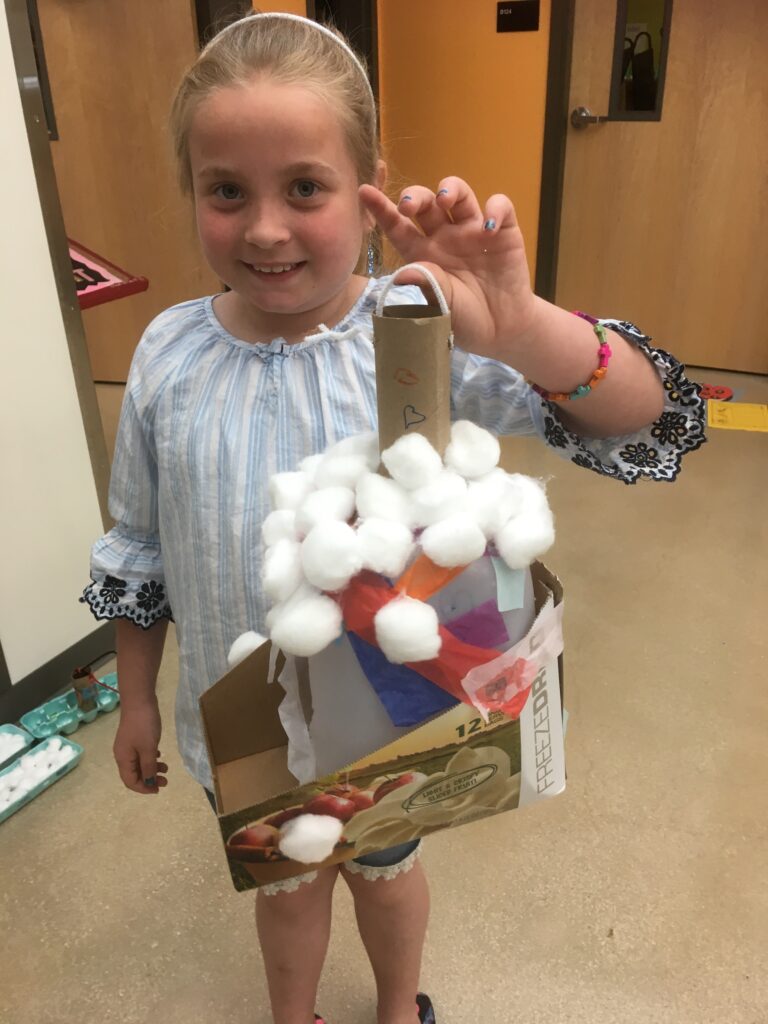
And there you have it! A fun and engaging project-based learning activity that goes perfectly with Earth Day and Recycling! If you’re interested in checking out my resource: What if Everyone Did That? Click HERE to check it out!
Until next time… let’s take your classroom to the next level!



